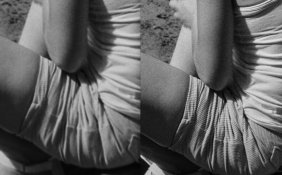A couple of thoughts ...
It may be (I am guessing) that the OP is coming from a digital photography background. Forums dedicated to digital photography are thick with endless debates about "sharpness", mostly derived from the photographers loading up their images in LR or PS (or whatever) and then poking around in the corners of their pictures "at 100%", and then arguing endlessly about which picture from which lens and sensor is "sharper".
If someone is only looking at homemade scans of negatives and attempting to judge "sharpness" on a similar basis, then there are a whole lot of other issues that intervene to make the question of "sharpness" very unsharp indeed: the resolution and focus accuracy of the scanner, the post-processing applied to the scanned image, grain aliasing and so on can (will) all contribute to making it difficult to form consistent conclusions about "sharpness". Plus of course, no film will ever look "as sharp" compared to a digital photograph from a decent sensor when subjected to the "at 100%" test.
Comparing a well-made, normal sized print from either a process , however, will probably mean it is hard to distinguish which is "sharper" (lets rule out silly comparisons like mural sized prints from an enlarged 11x14 neg
vs a small-sensor digital pic,
etc.)
Plus of course all the other factors that contribute to apparent "sharpness" (motion blur, camera shake, Ajaxed lenses, choice of developer).
I gave up ages ago trying to distinguish between different films/processes/lenses on the basis of viewing negative scans online. Not only are there too many variables introduced in the digitisation process, the resolution of the average web image is far far too low to make a sensible judgment - just about any film looks much like any other film, or can be made to do so.
I'd guess that the vast majority of film negatives now end up in a scanner and not in the negative carrier of an enlarger ... and perhaps are never printed even on an inkjet. Accordingly, the question isn't so much "Which film is sharpest?" but "Which film when I process it and scan it produces the image quality I like best?", and that can really only be answered by personal empirical testing; that is to say, shooting, developing & scanning with a test regime that allows sensible comparisons to be made.
The downside to this is that if you want to be truly rigorous, this could take months if not years (rather like EI testing for every camera, film, shutter speed and aperture combination

).
I'm not saying this to denigrate the OP or digital photography, simply to point out that the issue of "sharpness" in this context is really a bit of a red herring ... APUG is a community the explicit aim of which is to discuss and promote entirely wet processes, and explicitly excludes discussion of digital matters. That means if someone posts negative scans and asks for help, the natural bias of most of the community might be to answer in terms of their experience in making darkroom prints from film, and with an assumption that the end point of the process will be the print and not an image presented on a screen.
That "skew" doesn't the advice less valuable, but it needs to be accounted for.
[And just to be absolutely clear: I'm not suggesting APUG be opened up to hybrid questions, I'm not suggesting the OP go to DPUG, I'm not making any suggestions that one process is "better" or more "real" than another, I'm not criticising or denigrating any of the advice or discussion so far in the thread, I'm simply offering some personal opinions and a suggestion that things are complicated and not amenable to simple answers

]














 .
. but in what regards film photography in particular), so I'm learning on the go.
but in what regards film photography in particular), so I'm learning on the go. 
 ]
]